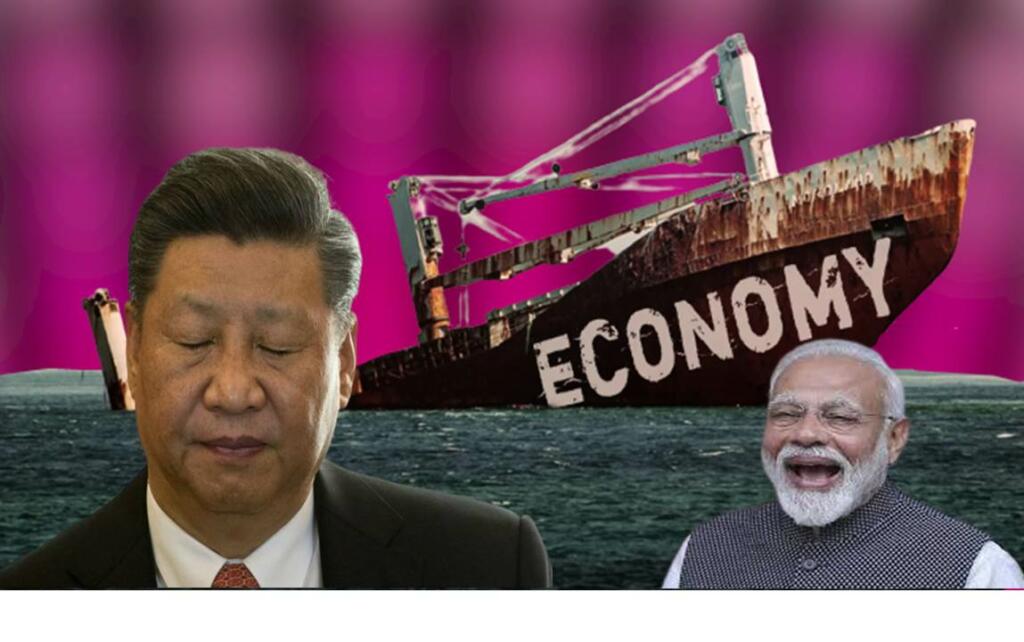Chinese economy was rising at a good pace. At one point, it seemed that it was all set to rule the world. Almost everything that the world used was made in China.
But in 2020, things changed. Jinping decided to station Chinese troops at the Indo-Tibet border. Soon, the Indian and Chinese troops were locked in an eyeball-to-eyeball standoff. The next thing we know, troops from the two sides clashed at the Galwan Valley. The Indian Army thrashed the Chinese PLA. And meanwhile, in New Delhi, the Indian government decided- it’s time to bring down the Chinese economy.
So, India is now replacing China as the world’s export hub.
India’s exports industry hits $400 billion mark
On Wednesday, Prime Minister Narendra Modi tweeted, “India set an ambitious target of $400 Billion of goods exports & achieves this target for the first time ever. I congratulate our farmers, weavers, MSMEs, manufacturers, exporters for this success. This is a key milestone in our Aatmanirbhar Bharat journey.
India set an ambitious target of $400 Billion of goods exports & achieves this target for the first time ever. I congratulate our farmers, weavers, MSMEs, manufacturers, exporters for this success.
This is a key milestone in our Aatmanirbhar Bharat journey. #LocalGoesGlobal pic.twitter.com/zZIQgJuNeQ
— Narendra Modi (@narendramodi) March 23, 2022
This is for the first time that the actual numbers have met the government’s annual export target since 2014. The target has been achieved 9 days ahead of schedule. It effectively means that India exports merchandise worth over $1 billion every day and $33 billion every month.
Phenomenal growth
India’s exports growth has been phenomenal, indeed. There has been over 21 percent growth in exports over the previous record high of $330 billion, which was achieved in FY 2019 in the pre-COVID era.
The sudden growth has been powered by the rising commodity prices, growing consumer demand, and expansionary monetary policy formulated by advanced economies in response to the Pandemic.
How India is eating into China’s export sector?
A difficult FY21 was marked by repeated lockdowns, travel restrictions, industry shutdowns and dipping consumer demand. All these factors coalesced to rupture the global supply chains.
It became clear that a post-Pandemic world won’t be the same as the pre-Pandemic world. China itself was hit by shortage of raw materials like coal and iron ore, jamming of ports, tight lockdowns under Xi Jinping’s zero-COVID strategy and trade wars with the US and the EU.
On the other hand, India recovered particularly well from the Pandemic. Apart from the first wave of the Pandemic, there never came a time in India when the workforce was lying idle or industries were shut.
Read more: India is all set to achieve new benchmarks in the Global export sector
Soon, India made it a point to chip away with China’s years-old export sector advantage. Take the steel sector for example. China traditionally dominates the global steel industry, with over half of the world’s steel production.
However, Xi Jinping’s insistence on not exporting Australian coal led to a slowdown in China’s steel industry. So, who filled in the vacuum? India, of course! In the first ten months of FY22, India earned foreign exchange worth $19.2 billion from iron and steel exports as opposed to $12.1 billion in FY21.
India is therefore capitalizing upon China’s bleeding exports industry. The Chinese manufacturing sector and economy is already in a precarious condition. All that the Indian policymakers need to do now is fill in the vacuum being left behind by China. And this is exactly what they seem to be doing. With motivating factors like the Production Linked Incentives (PLI) scheme, India’s export industry is already worth $400 billion. And it is set to keep rising further until and unless China is totally killed out of the global supply chains.
